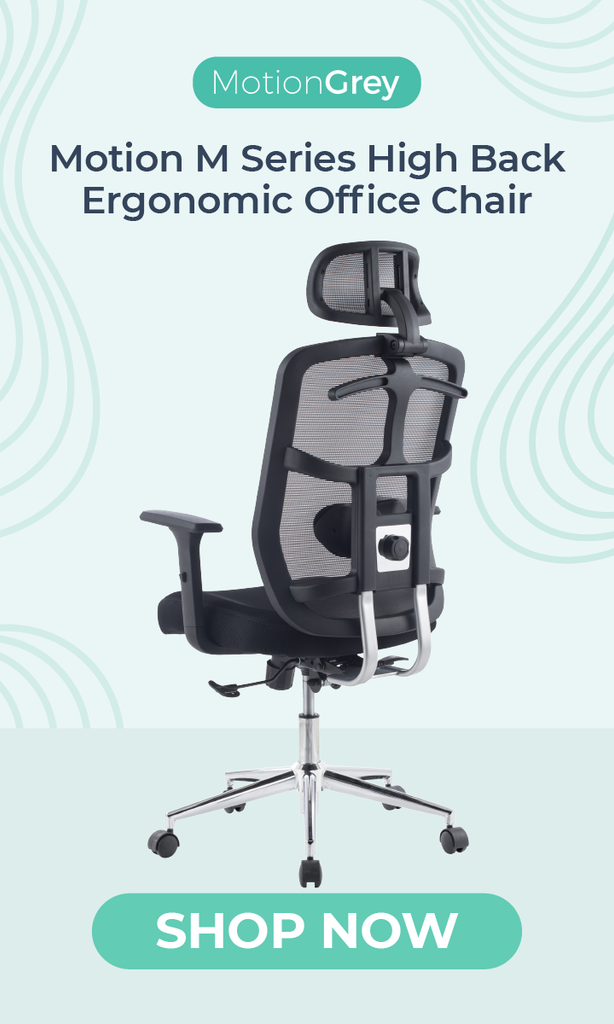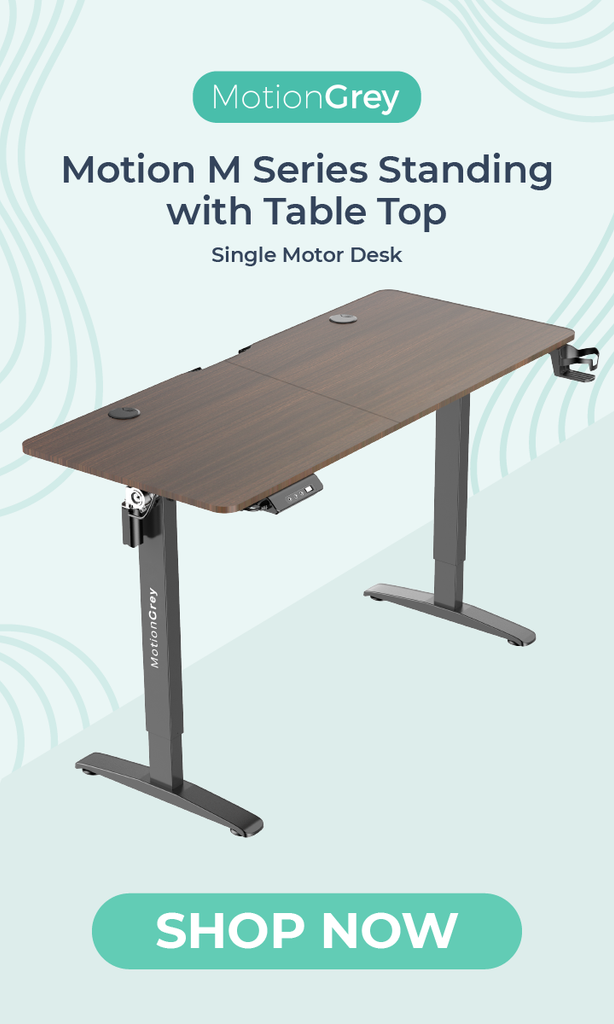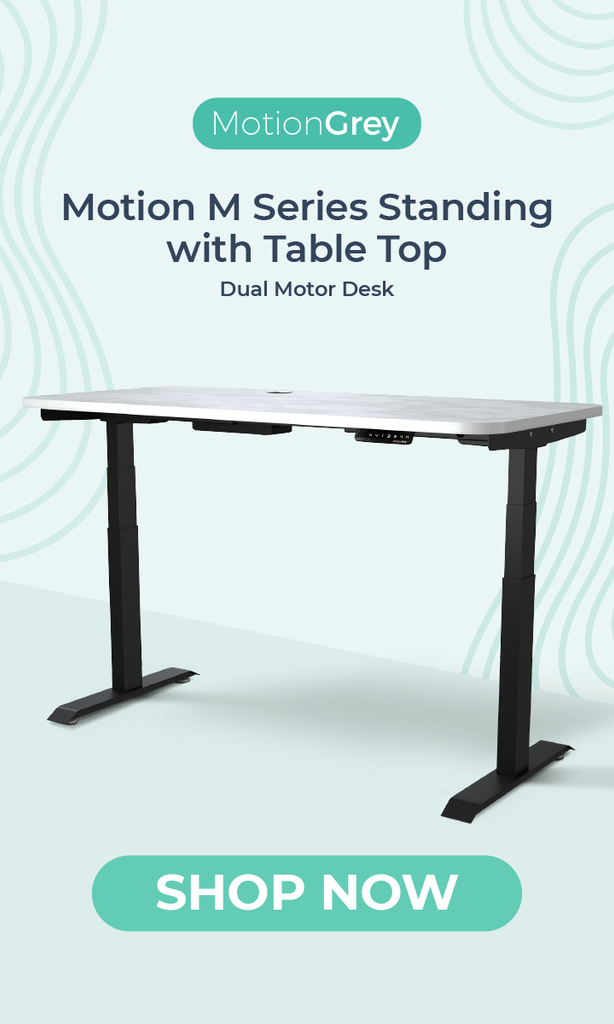Ergonomic Work Zones and How They Can Help You Stay Healthy at Work
Did you know that back pain is the most common cause of disability among individuals aged 45 and below? If you’re starting to suffer small back pain at work or notice numbness and fatigue on your back at the end of a workday, don’t ignore the pain.
Check the condition of your workstation. Are you using an ergonomic chair to fully support your back? Or a high-quality adjustable standing desk to keep you moving and active all day? Is your workstation designed according to correct ergonomic work zones? Look into your working habits, as well. Are you moving enough? Are there specific habits that might be causing your back pain or putting extra stress on your body?

A Quick Look at Ergonomic Work Zones: What They Are & How They Can Help You
Ergonomic work zones basically deal with the set-up, the arrangement, of your workstation—where things are placed and, more specifically, how easy it is for you to reach them. Investing in a standing desk is one thing, but keeping the desk and everything in it properly placed is another. Knowledge of the ergonomic work zones is helpful in keeping your body healthy and in preventing the most common health problems people encounter in the workplace.
Before we move into a more detailed discussion about ergonomic work zones, let’s take a look at some of the most common unhealthy habits we want to address and eliminate at work.
Bad Posture
Most people think that back problems are usually directly caused by injury or accident, such as a fall or a slip. However, in reality, many cases of back pain are caused by poor posture and develop over time. According to research, over 90% of back injuries are caused by stressful postures in our day-to-day life, in addition to injuries in the workplace.
Bad posture puts a lot of stress on the muscles, causing back pain, fatigue, and, in the long run, various musculoskeletal disorders (MSDs). And, without you knowing it, your workstation could be contributing to poor posture. Apart from having an ergonomic office chair, you also need a properly arranged workstation that supports your posture while working.

Repetitive Movement
Many types of musculoskeletal disorder develop over time, years, caused by habits that might seem harmless when done on any regular day but are harmful when done repeatedly. This is the reason constant typing can cause carpal tunnel syndrome if you’re not doing it right or if you have a poorly designed keyboard.
Reaching, extending your arms unnaturally, twisting your body constantly to do a task—these are habits that can cause MSDs. And more often than not, these are affected by the way your workstation is set up.
Unhealthy Work Habits
Are you sitting for eight to nine hours a day straight? Typing with your back hunched? Or do you have a tendency to slouch on your chair? These are habits that will bring you both short-term and long-term harm. What’s tricky about posture is that most people don’t know when their posture is bad, so it takes intentional effort to correct or improve it.
To do this, check any symptom you may have. Do you experience back pain, neck pain, or shoulder pain at the end of the day? Do you easily get tired at work even on normal days? Poor posture could be causing that. Place reminders in your workstation so that when you see them, you can easily correct your posture.

The Different Ergonomic Work Zones
There are different types of ergonomic work zones, each type corresponding to a zone, an area, in your workstation.

Zone 1
Your primary zone is the zone in your workstation that is easily within reach when you are seated in a natural position. This means when you are reaching for the items in this zone, you won’t have to move your body a lot—you won’t need to move your upper arms or twist your body.
This zone must contain everything you frequently use, such as your laptop, mouse and keyboard, or your pen and pad. This zone is about 10 to 15 inches away when you’re in neutral sitting position.
Zone 2
This zone is not just an area on the surface of your workstation but around it, about 10 inches above your shoulders or below. The secondary zone carries all the things that are not as frequently used as those in the primary zone, reaching for which would entail moving your arms away from your body or extending them straight to reach for something.
Some items you can place on your secondary zone are your tumbler or mug, your files, and other items that you use daily but not as frequently.
Zone 3
The area beyond the primary and secondary zone (within your workstation) is your tertiary zone. Access to the things you place in this area will entail you to bend, twist your waist, or to move your upper body. This is the area for all the things you seldom use or access, such as decorative items like your plants. It is important not to place anything you use frequently in this area, as repetitive bending or overextending of your arms will definitely harm your body in the long run.
When looking at ergonomic work zones, the first thing to consider is to have your workstation arranged so that everything is within proper distance from you—for easy and comfortable reach.
Tips to Create a Healthy Workstation
Keep your desk neat and organize.
Whether you’re using a regular desk or a standing desk (highly recommended!), it’s important to keep it neat and clutter-free. This is especially true for your primary zone. Make sure only the important things are placed on this zone. Too many items here and you’ll likely bump into things or knock some items down. So, minimize and select only the very important things.

Have a place for everything
In relation to keeping your workstation clutter-free, make sure to allot a proper space for all your items—pen holders for all your pens and pencils, catch-all tray for all those loose items, an under-desk storage below or built into your desk, and wire organizers or sleeves for all those loose and stray cables, to begin with. Having a place for everything will ensure a properly organized workstation.
Use ergonomic accessories
In addition to having your mouse and keyboard in your primary zone, investing in ergonomic mouse and keyboard will go a long way to caring for your hands, wrists, and fingers as you work on your computer all day.
A standing desk paired with an ergonomic chair—there’s nothing better than this combination to make a healthy, ergonomic workstation. And if you’re looking for more, other items to consider would be an anti-fatigue mat, a foot rest, and additional cushions for your chair.

Is it time for you to do some work on your workstation to make sure everything is in their proper work zones? There’s no better time to do it than now!
About Us
MotionGrey is a Canadian standing desk company that specializes in ergonomic furniture. We supply and install only the best quality standing desks and ergonomic chairs in the country.
Our products are designed with wellness as the focal point. From our electric standing desks to our office and gaming chairs, we deliver best value by putting your health, safety, and comfort as top priority. Boost your creativity and level up work performance. We want you to create great outcomes so we’re providing you only the best tools to make them possible.
Click here to view our selection of products. Got questions?





